In Issue #112 of Singletrack Magazine, we tested three mountain bikes to find out what we’d choose to survive the Zombie Apocalypse
Olsen Bicycles is a brand new name on the mountain biking scene. Named after its Kiwi founder, Steve Olsen, the brand was formed on the idea of producing the ultimate weatherproof mountain bike for British riding conditions. Very early on, Olsen recognised that a belt drive setup coupled to a sealed internal gearbox would be the ideal maintenance-free system for such an all-weather machine. More importantly, without a flimsy derailleur hanging off the back, there’d be zero chance of getting a zombie finger jammed in the drivetrain during a hasty getaway.

Olsen’s original design utilised a Pinion gearbox and a frame built from 4130 cromoly – a material that was UK-friendly from both a manufacturing and a consumer perspective. After coming to the realisation that the final steel frame weight would, however, be too high (at least 2.5kg without the gearbox), Olsen made the decision to pursue local carbon fibre production to deliver a much lighter, and ultimately tougher frame. Earlier this year, Olsen went on Kickstarter to help officially launch the production frame.
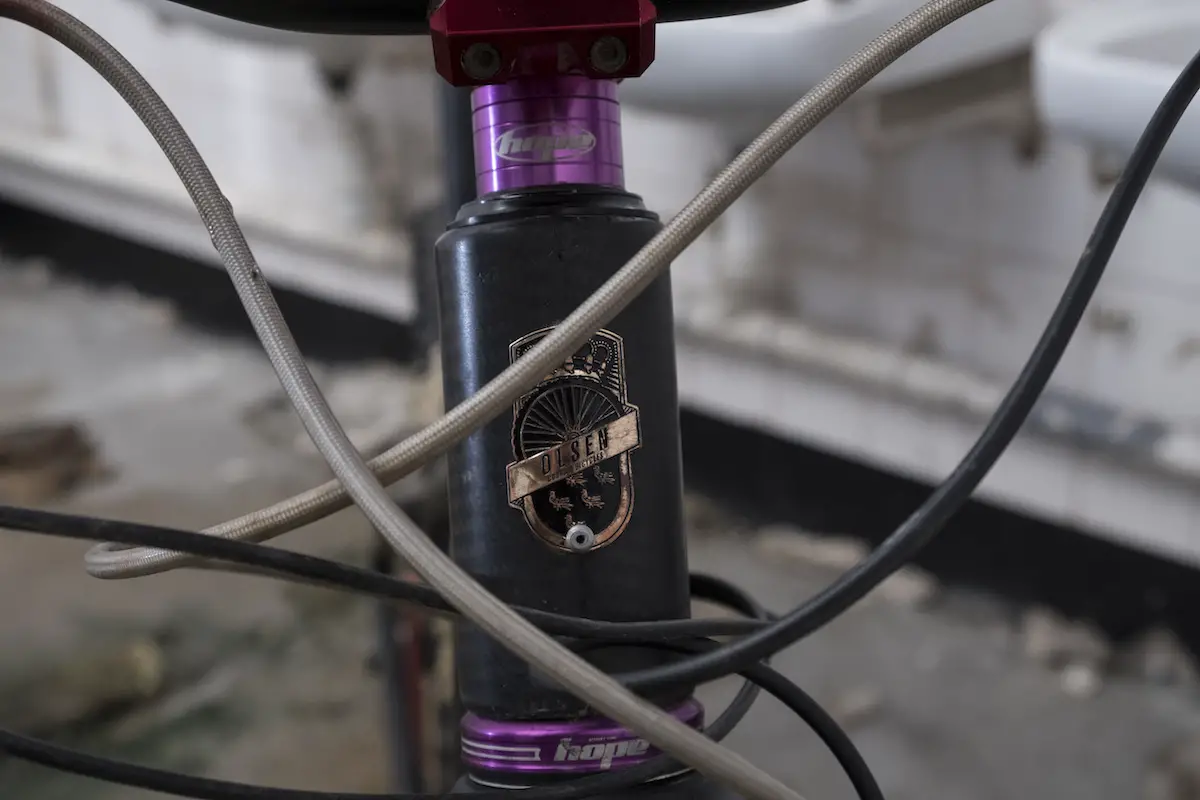
The bike we’re testing is Steve Olsen’s personal prototype – the Olsen Ram. The Ram is the 27.5+ setup, with big 3.0in wide tyres that are ready to ride over the top of any dead bodies in your path. The same frame is also available with a regular 29in wheeled setup called the Swan. Both versions are designed to cover a wide range of riding styles from cross-country to off-road touring through to technical trail riding. Olsen has plans to expand the range, with cyclocross and cross-country models on the way that will also be named after pubs found along the South Downs Way. Hopefully one of them will be called The Winchester.
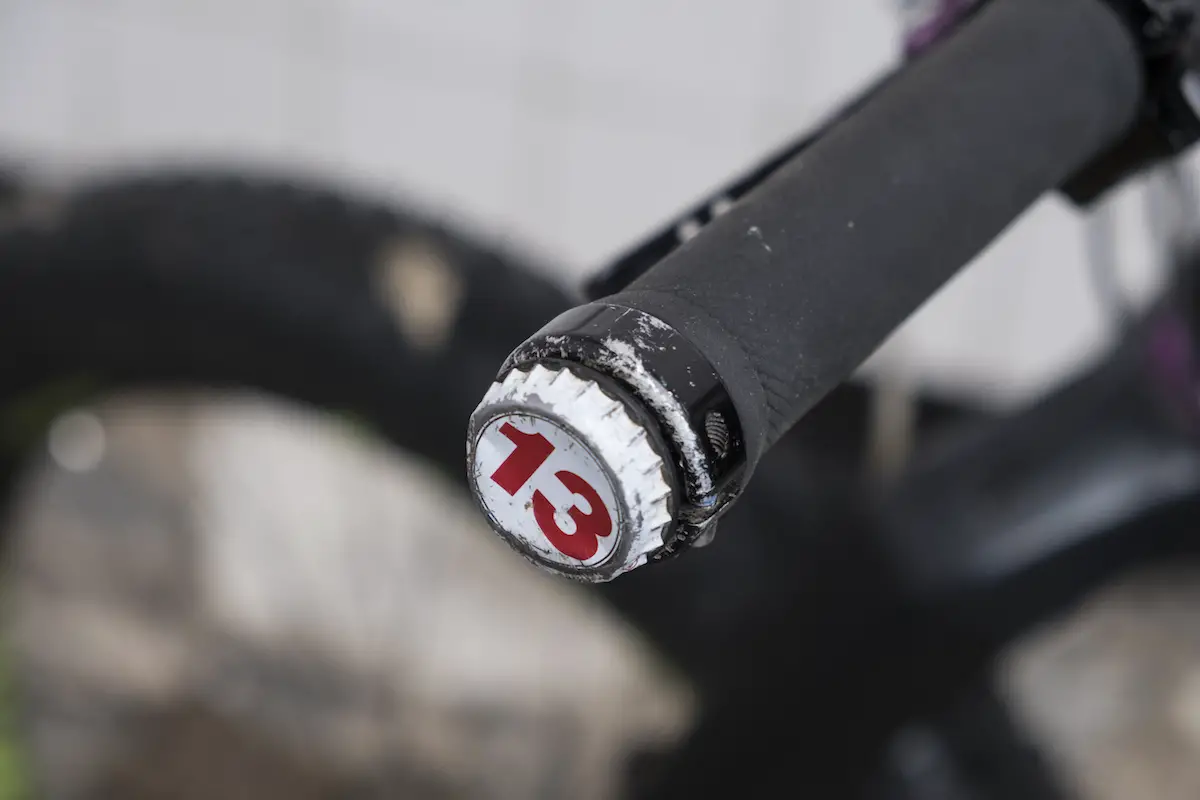
Each Ram is built with a carbon fibre monocoque frame handmade in Sussex. Olsen wanted to keep production local from a quality control perspective and for manufacturing flexibility. Small-scale in-house manufacturing is also key to being able to offer semi-custom geometry. Semi-custom meaning you can specify the reach and head angle you require, and the frame is then built to order.
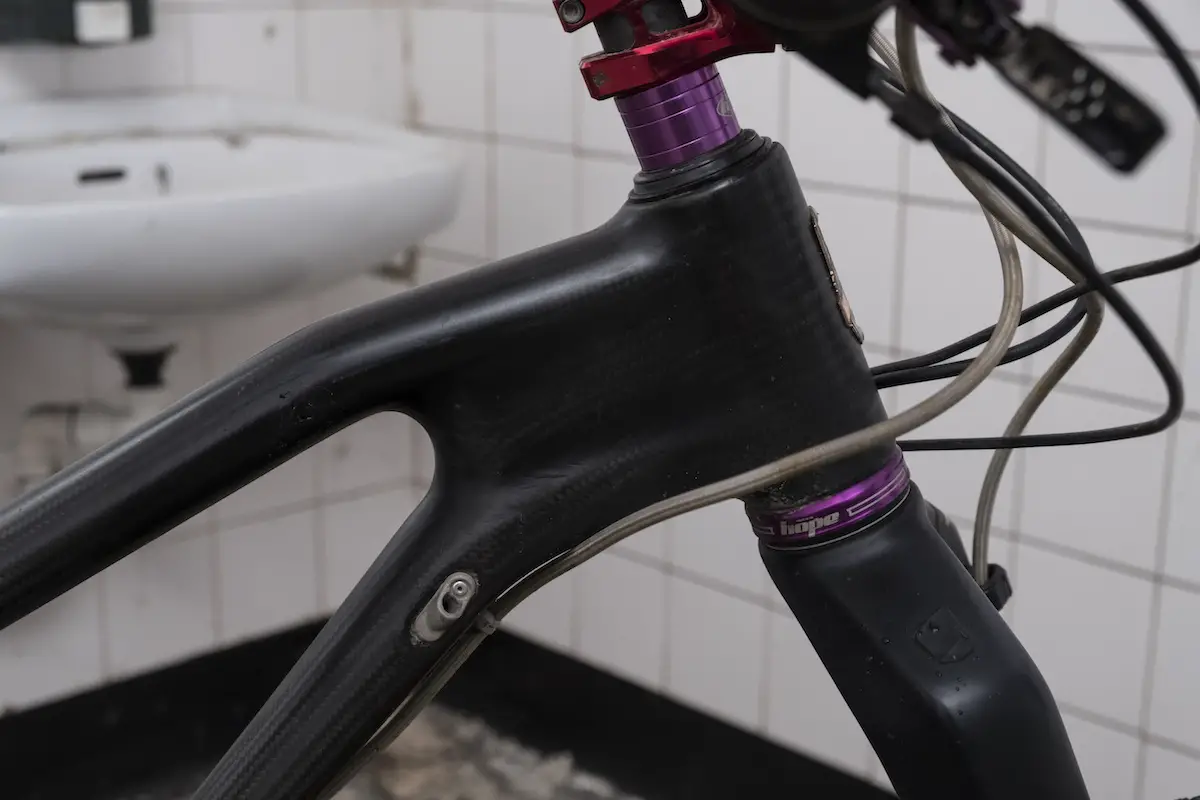
Essentially, each frame is made in two halves. Everything behind the hump on the top tube junction is made as a standard mould. So the seat tube length, bottom bracket drop, and chainstay lengths are identical for each frame. However, the head tube junction is completely unique to each individual frame. Customers can choose a head angle between 66–68°, and a reach measurement between 400–455mm long. Olsen claims this approach should cover most riders from 5ft 5in through to 6ft 5in.
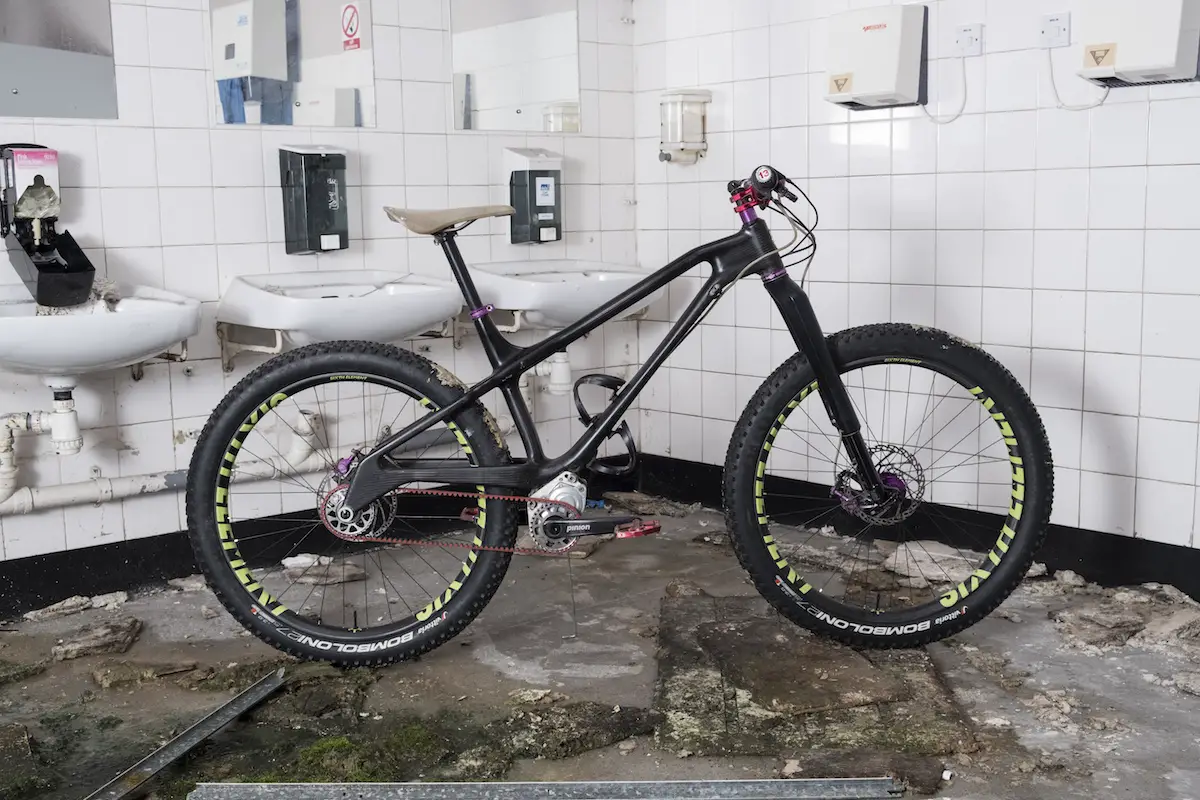
The Bike
Aesthetically, the Olsen Ram is one of the most radical mountain bikes we’ve ever laid eyes on. Needless to say, it also got the most looks at the trailhead too. With a compact front end, the Ram suspends the low-slung Pinion gearbox underneath the base of the downtube via two CNC machined alloy mounting plates. The elevated chainstays allow for a relatively short back end by eliminating any chainring clearance issues, while also negating the need to split the rear triangle to accommodate the belt drive.
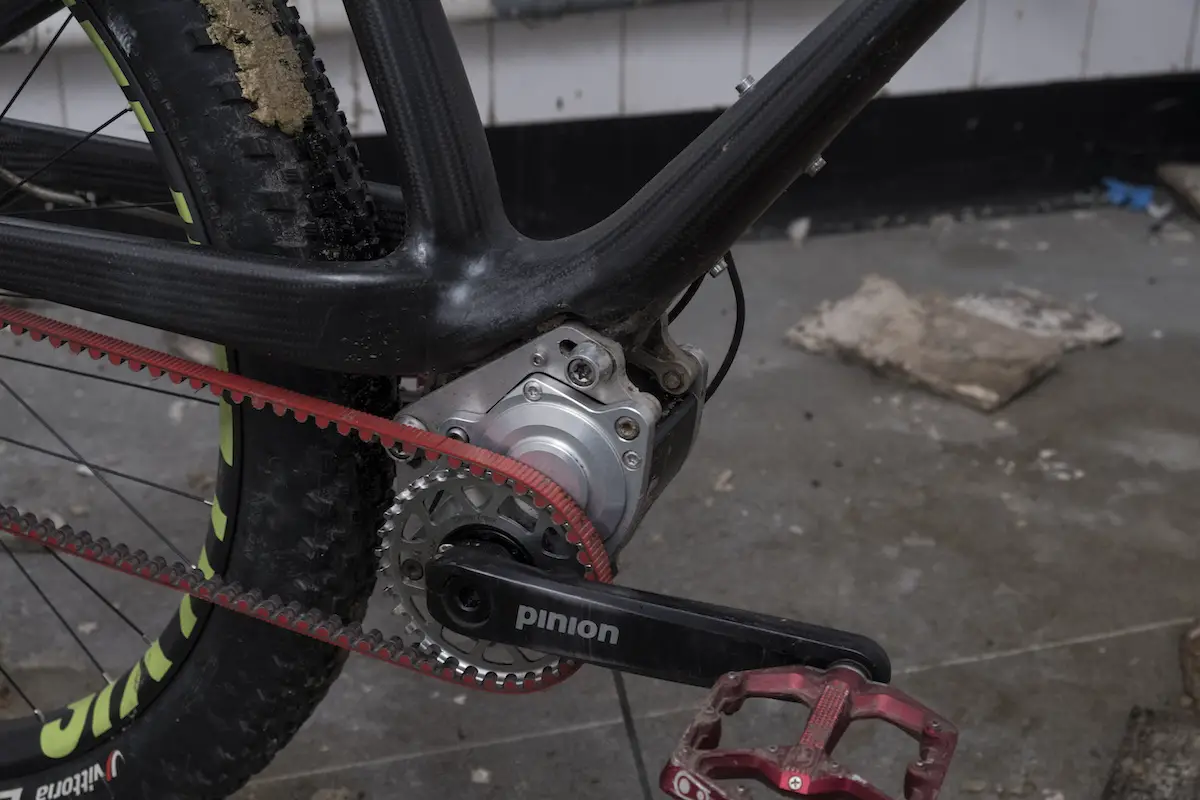
Despite the futuristic design, Olsen has kept practicality high on the list of priorities with the Ram. The enormous dropouts utilise a regular 142x12mm Syntace thru-axle for compatibility with currently available singlespeed rear hubs, while the 30.9mm seatpost is dropper-ready.
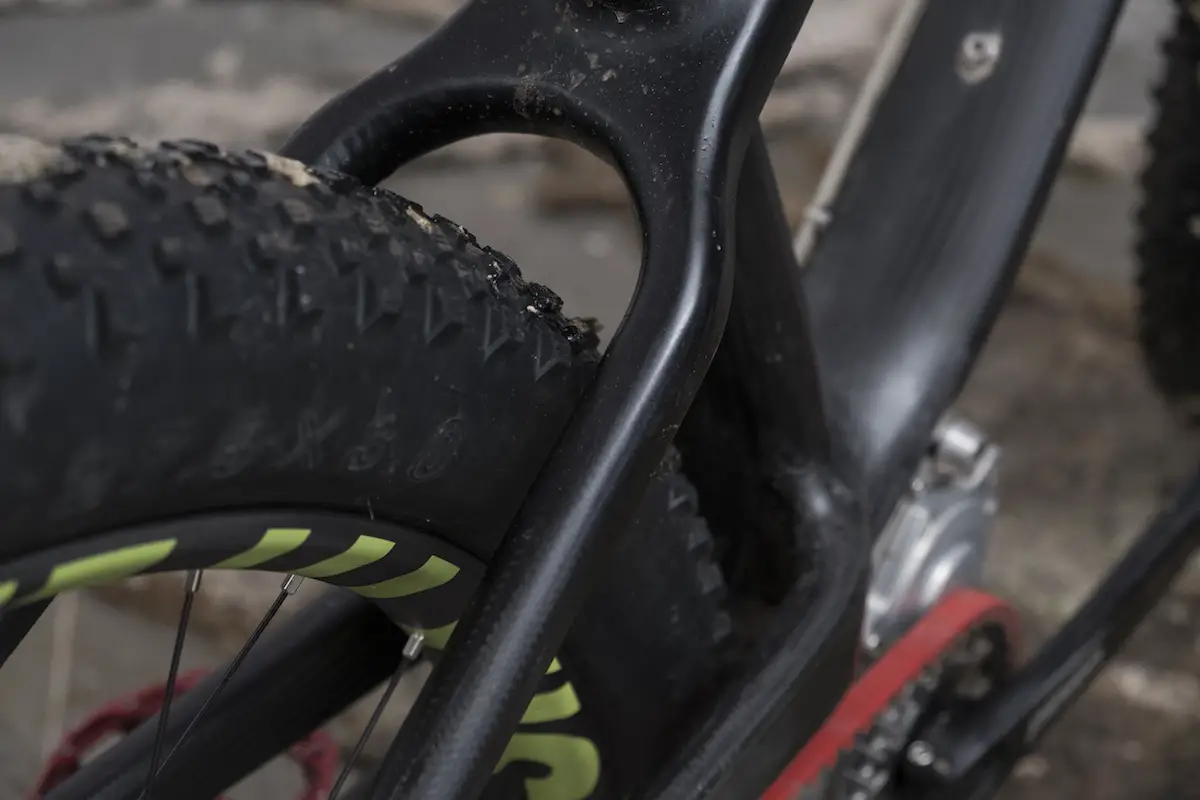
According to Olsen, the carbon frame on its own weighs in at 1.4kg. The frame could have been built lighter, but the priority was on maintaining the durability theme by building a super tough and resilient bike.
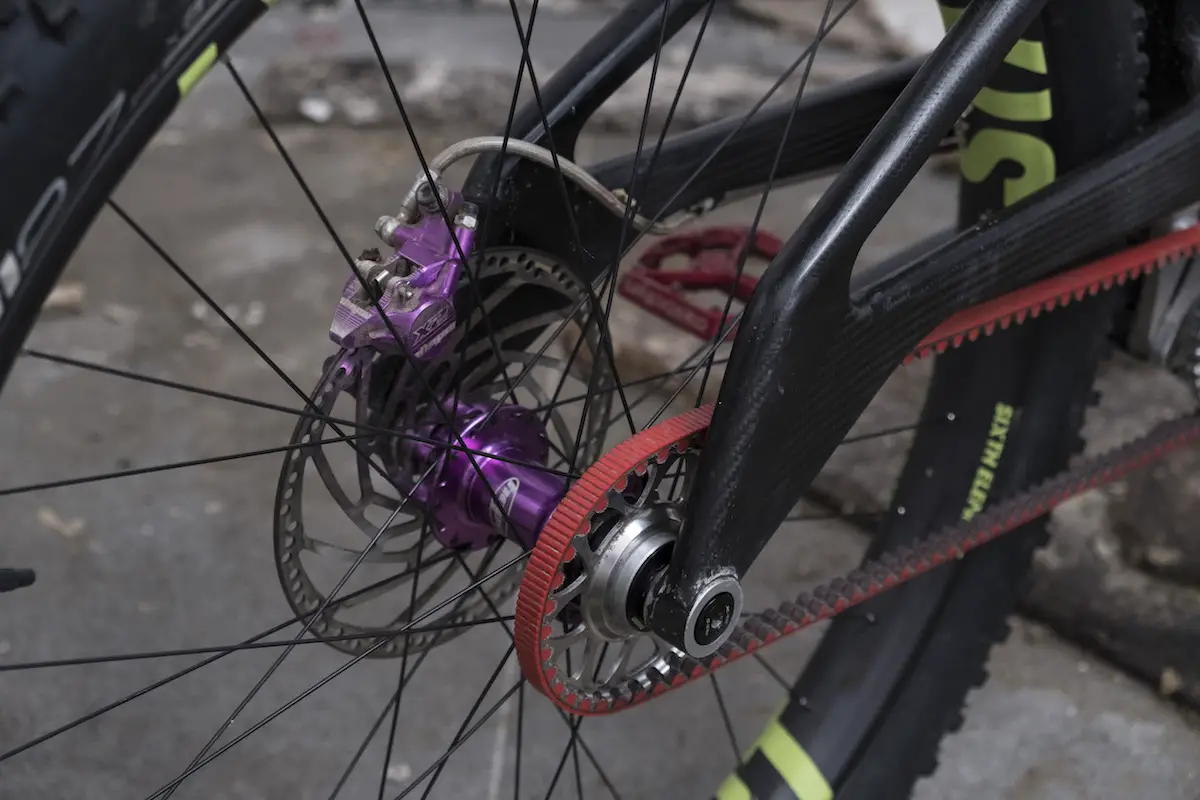
The Olsen Ram suits a 120–140mm travel fork in 27.5+ mode, and a 100– 120mm travel fork in 29er mode. You can even run it rigid too. To adapt to different fork setups, the bottom bracket height can be altered via interchangeable gearbox mounting plates.
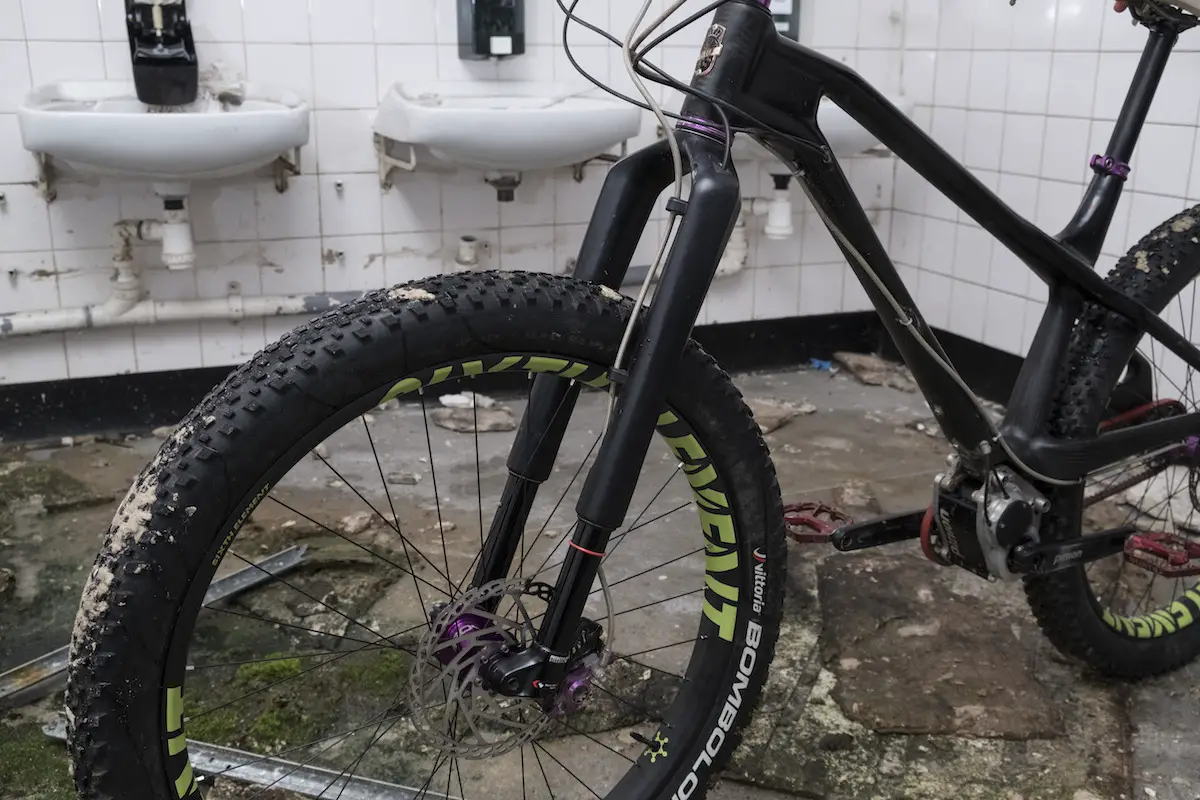
Our test bike originally came with a 120mm travel 29in RockShox RS-1 fork, though we also tested the bike with a 140mm travel Manitou Magnum 27.5+ fork. With the longer fork, the Ram test bike sits at 67° in the head angle and runs a rangey 450mm reach. Other key numbers include a 438mm chainstay length and a healthy 48mm BB drop.
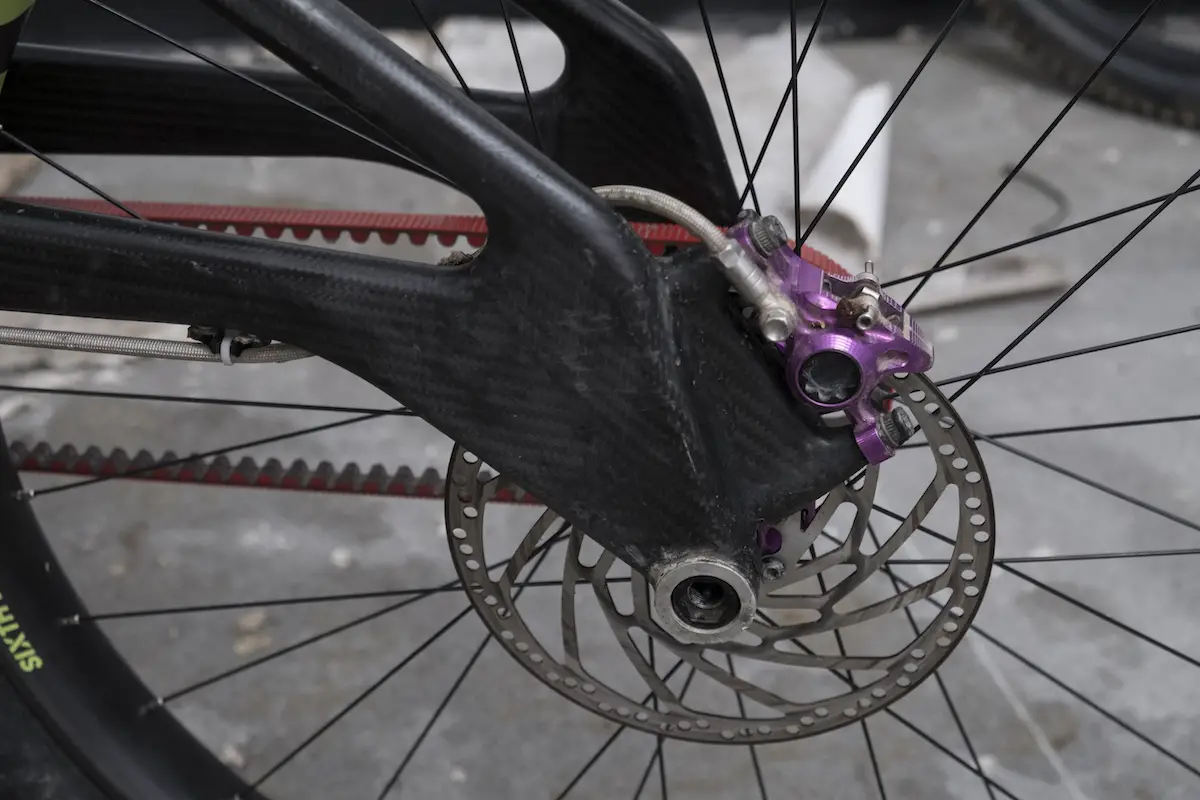
Being Olsen’s personal prototype, the Ram is built up with an eclectic mix of parts that includes a lightweight set of Sixth Element carbon fibre rims and Hope Pro4 hubs. Shifting gears is done by a Pinion Rotary shifter, which controls nine evenly stepped gears with a 364% overall range. It’s worth noting that production frames will be available with the new Pinion C1.12 gearbox that will be 100g lighter, while offering 12 gears and a massive 600% range.
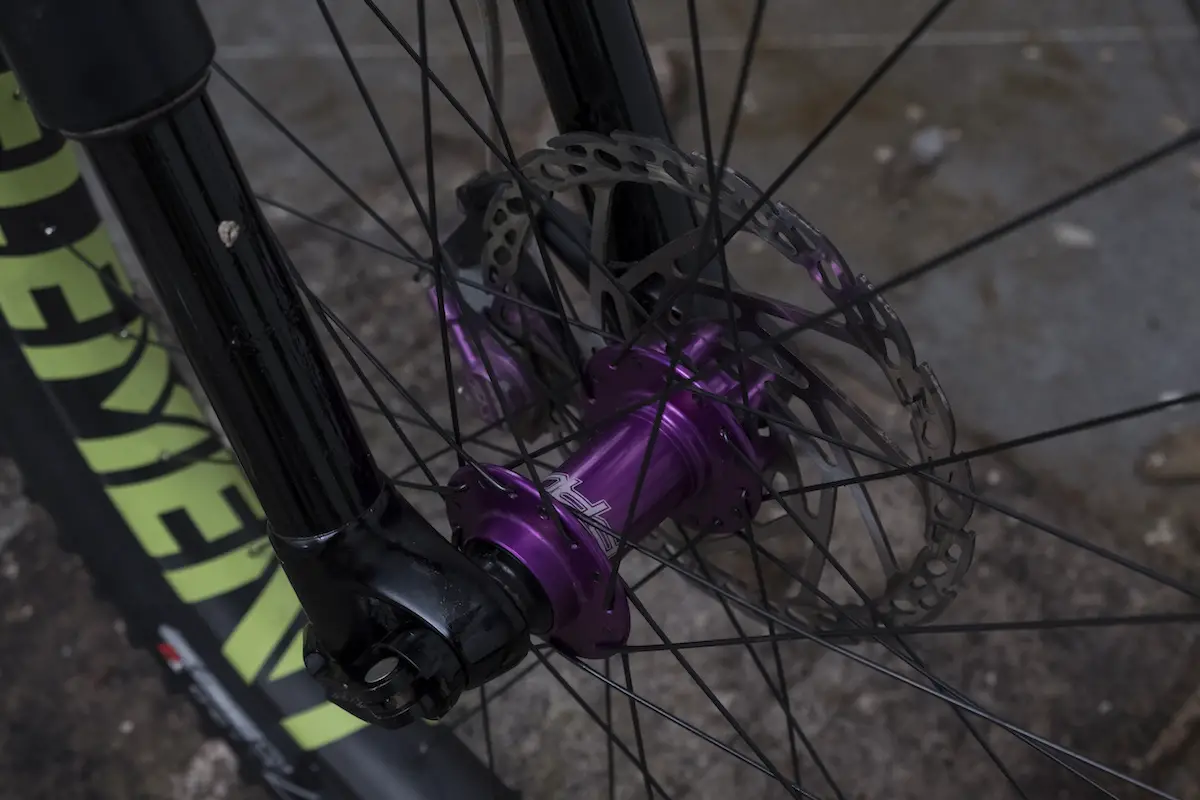
The Ride
To get the most out of the Ram, I fitted a set of 760mm wide riser bars and a compact 35mm-long stem to bring the grips in a little closer. Otherwise the fit was comfortable from the get-go, with an ever-so-slightly stretched riding position that puts you into mile-accumulation mode.
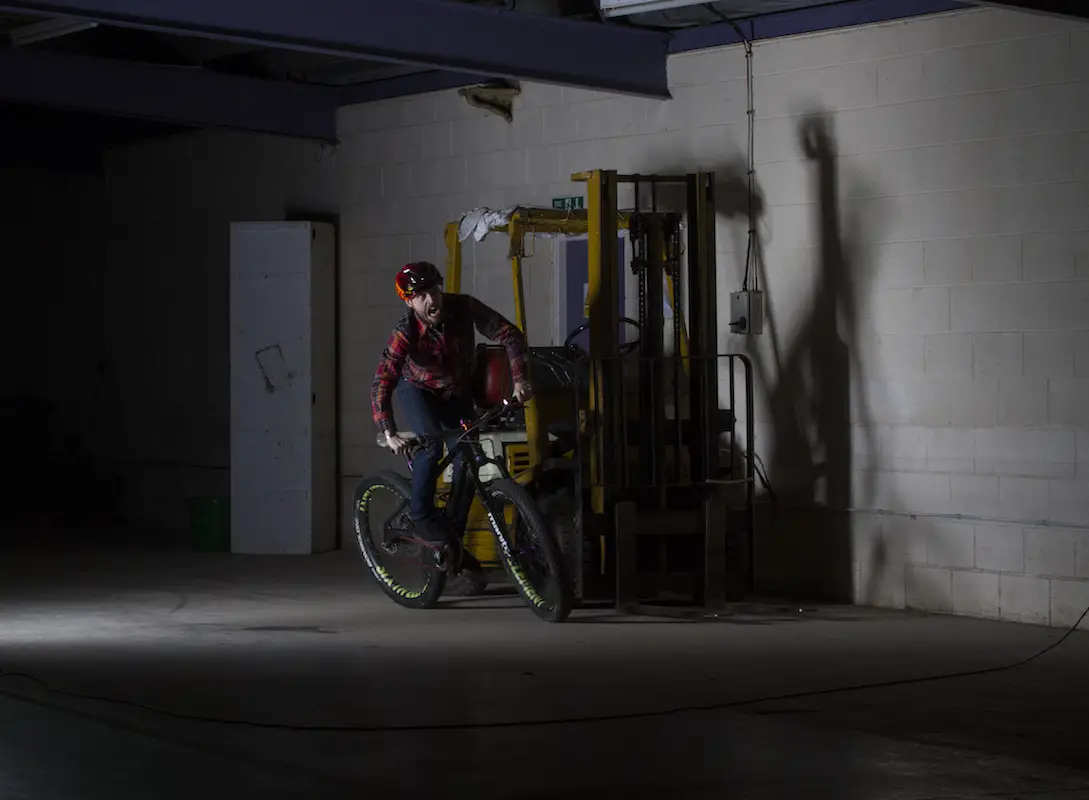
Setting off, the first thing that becomes apparent on the Ram is just how smoothly it pedals. With the Gates Carbon belt drive there is none of the usual friction felt through the cranks, and there’s next to no noise under pedalling. It kinda feels like a multi-speed singlespeed. No clunks, no whirring from the jockey wheels, and no peace-destroying ghost shifts. Certainly not having to worry about lubricating, cleaning and degreasing a chain is a serious bonus of the belt drive system, and one that’s been particularly appreciable over the wetter winter months. The Pinion gearbox itself is… interesting. Like the belt drive, there are some serious benefits. The first being maintenance – or lack thereof. All you need to do is drain out the oil out once a year (or once every 6,200 miles, whichever comes first), and top it up with 60ml of fresh oil. This is a simple procedure that can be done at home without any special mechanical knowledge. And that’s it.
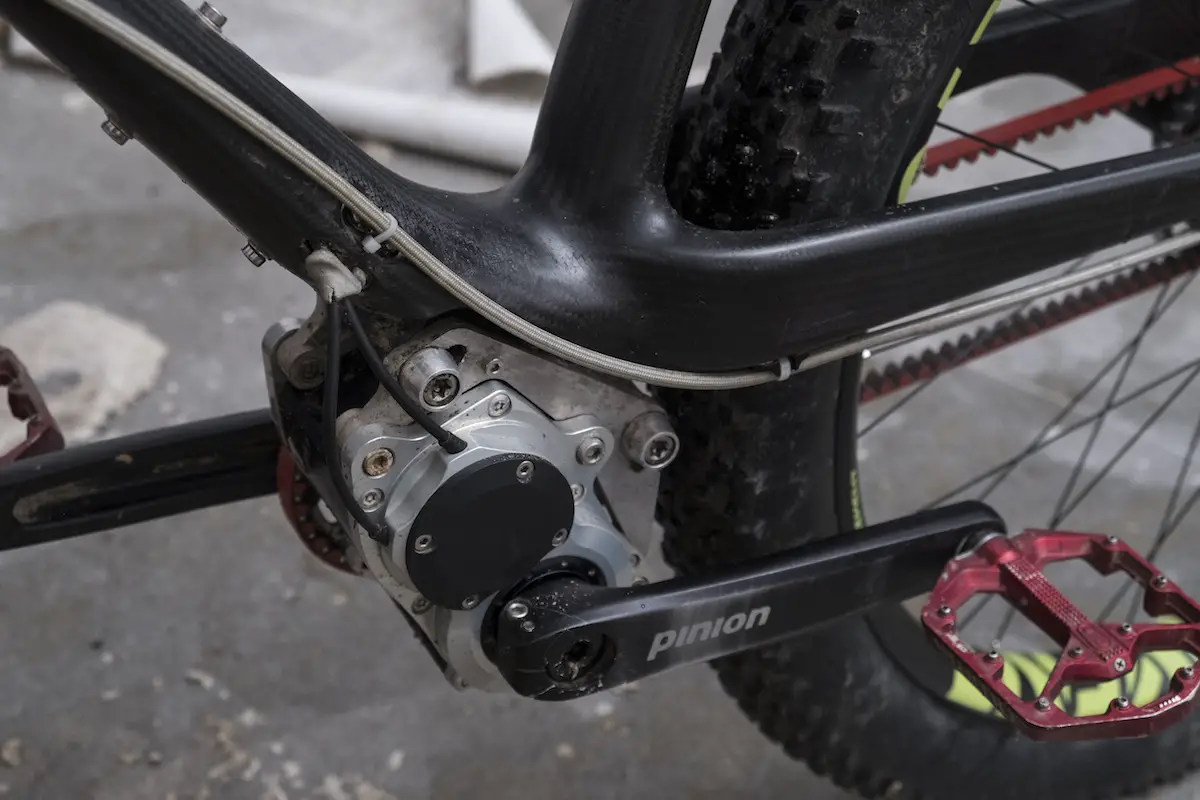
The other benefit of the Pinion gearbox is weight distribution. With all the guts contained inside the metal housing, drivetrain weight is kept low and centralised in the bike, with less mass hanging off the rear wheel. In the case of the Ram, this resulted in excellent cornering manners and a decidedly planted feel on steady terrain. That said, you’d kind of expect that for a bike that weighs 14kg/30.9lbs (with the RS-1 fork fitted).
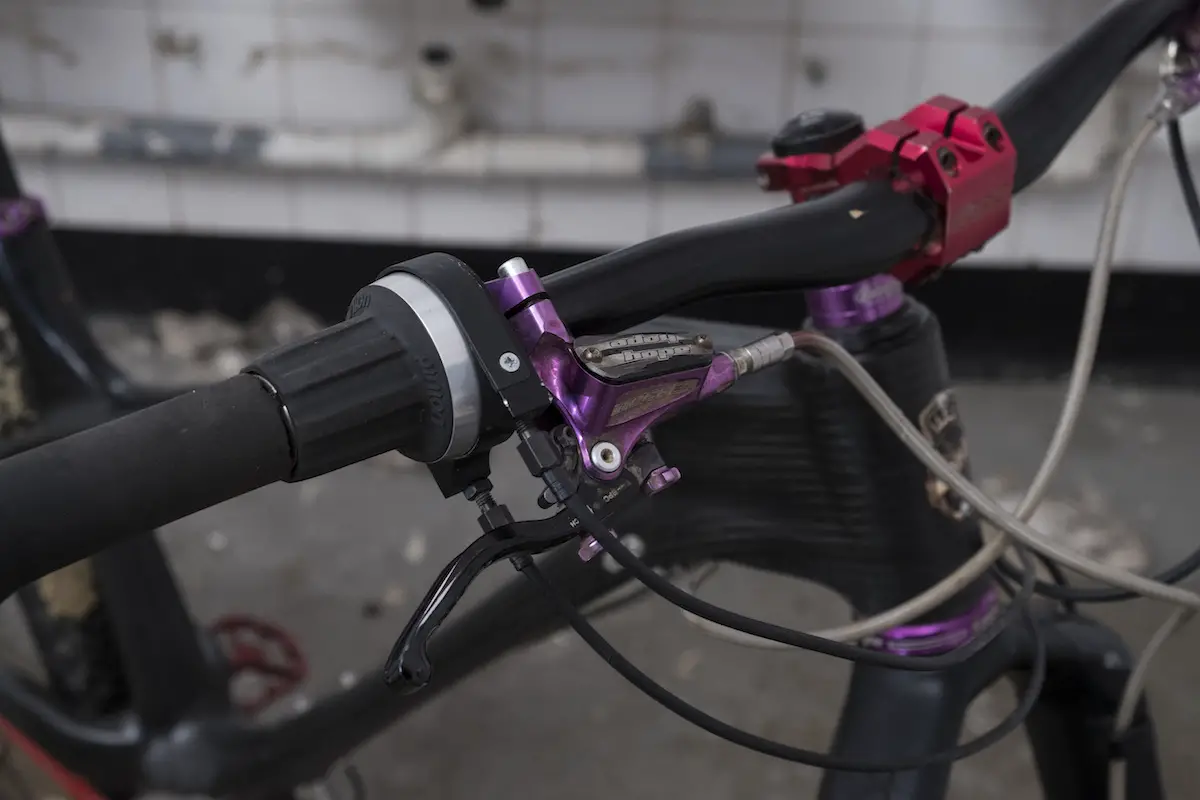
Using the Pinion gearbox takes some getting used to though. Because there is no clutch inside the gearbox, essentially you have to become the clutch. That means in order to shift a gear cleanly, you’ll need to pause slightly on the pedals as you click up or down a gear. This is particularly important when climbing, where you’re in a low-RPM-high-torque situation. The Pinion gearbox is fussy enough in this scenario that the shifter literally won’t budge if you try to force a shift. I found myself on occasion having to leap out of the saddle and mash on the pedals like a singlespeeder to clean technical climbs when I hadn’t timed a shift correctly.

After the first couple of rides, I managed to recalibrate my shift technique and the problems began to settle down. I found myself shifting gear just as my pedal would reach the 12 o’clock position, with only a slight pause at the dead spot being enough to click the shifter over. The gear changes themselves are quick, smooth and quiet. As long as you don’t mind the twist shifter, the end result of building the Ram frame around the Pinion gearbox is a bike that is simple and incredibly easy to maintain. Thanks to the elevated chainstay design, the Ram also seems to be impervious to mud.
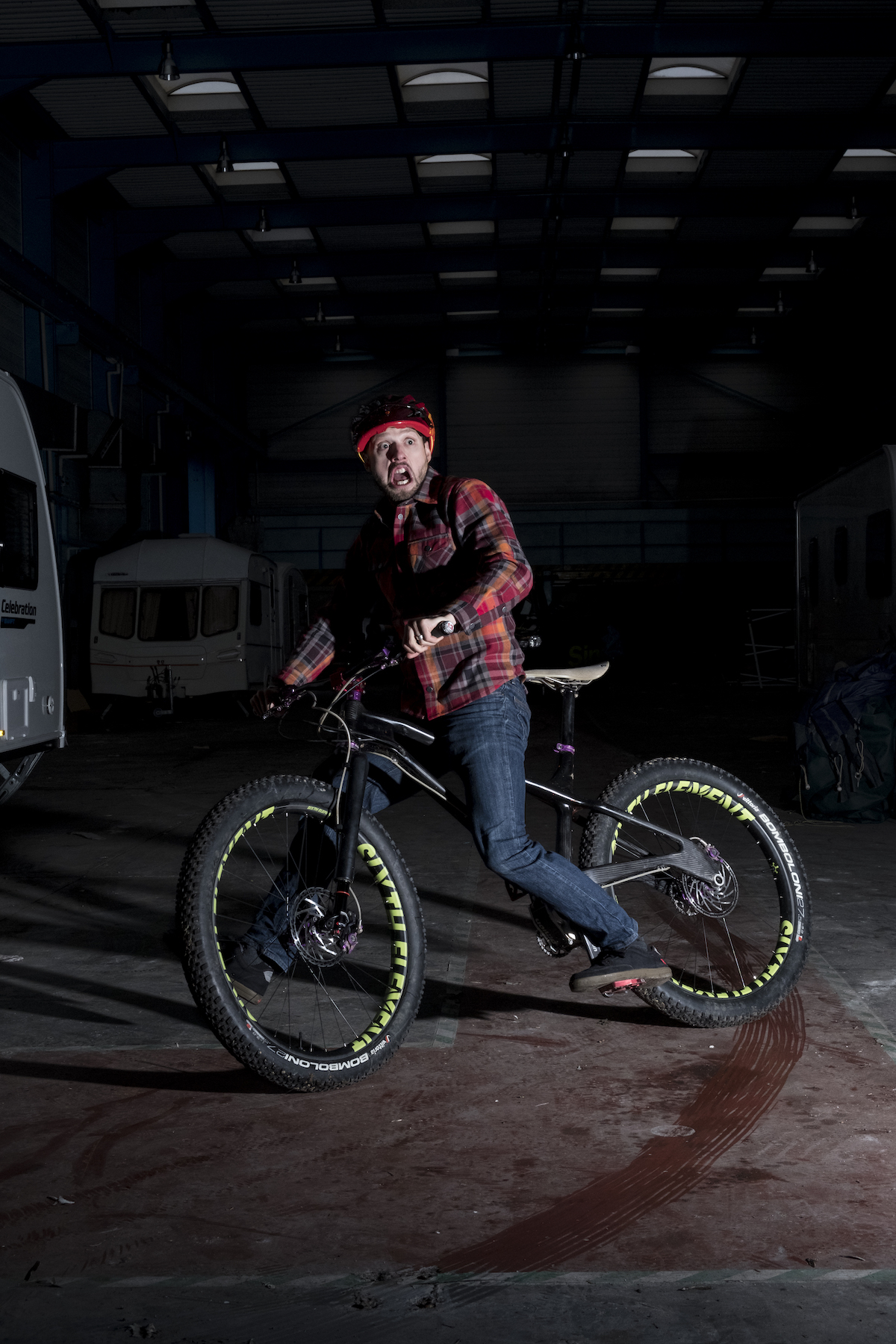
Unfortunately, the 3.0in wide Vittoria Bomboloni tyres don’t handle the mud so well. While the rest of the Ram is more than capable of mud-slinging, the low-profile tyre tread becomes a frightening mess in such conditions and leaves the Ram spinning off line without warning. To be fair, this only mirrored our experience with other plus bikes in sloppy conditions. The beauty about the Olsen frame however, is that you can run the plus wheels in summer, and then swap in a 29in wheelset with proper mud tyres for winter ploughing.
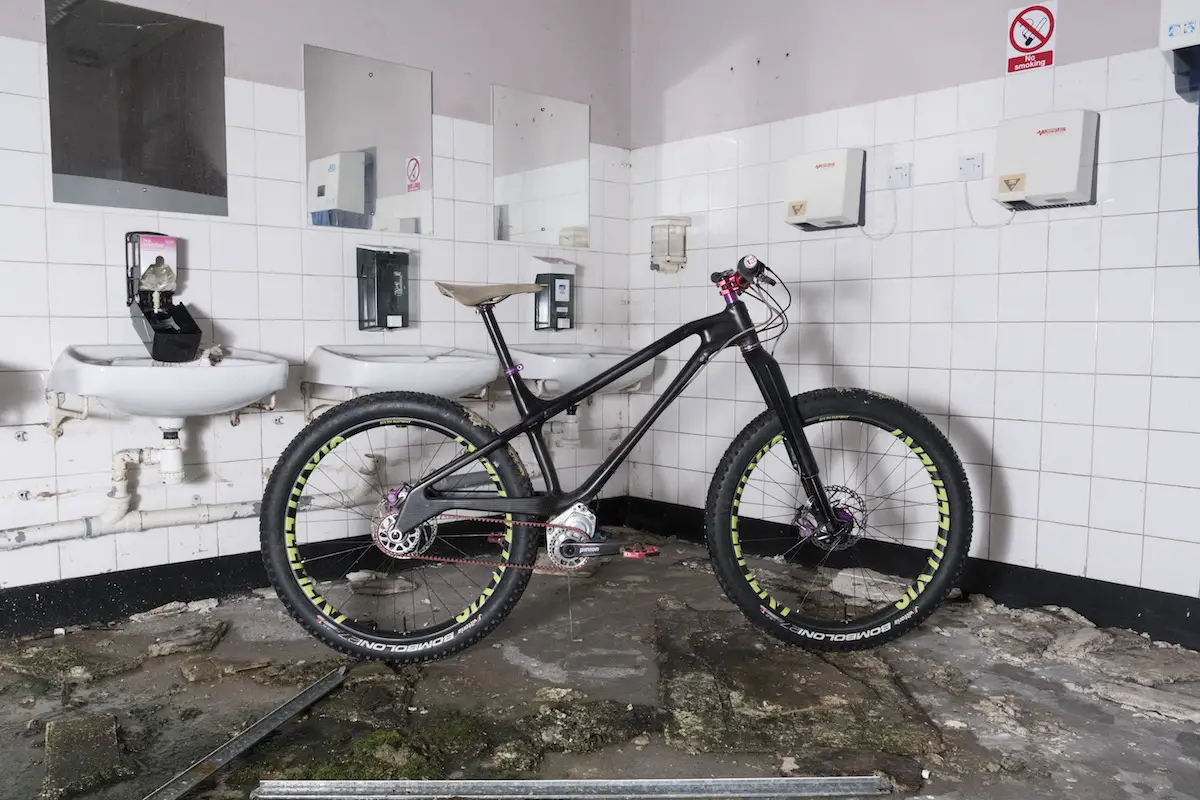
Overall
Because of the custom nature of each frame, objectively assessing the overall handling and geometry of the Olsen Ram is somewhat tricky. I know that if this were my bike, I’d personally order it in the 29in Swan configuration, along with a slightly shorter reach and a degree lobbed off the head angle. But really, that is the beauty of the product that Olsen is offering – you can alter the numbers to whatever you need. Regardless of setup, the Olsen Ram delivers what it sets out to achieve. It’s simple, reliable and comfortable, and it offers true long distance riding potential. It’s ideal for tackling rides such as the South Downs Way. Add in the wheelsize and fork flexibility, and you’ve got a bike that won’t just ride through all seasons, but one that’ll do it for many, many years over. https://www.youtube.com/watch?v=rqFUprzqRkk
Olsem Ram 27.5+ Specifications
- Frame // Carbon Fibre Monocoque
- Fork // RockShox RS-1, 120mm Travel
- Hubs // Hope Pro 4, Predictive Steering Front / 142x12mm Rear
- Rims // Sixth Element 50mm Carbon Rims
- Tyres // Vittoria Bomboloni TNT 3.0in
- Chainset // Pinion P-Line P1.9CR Gearbox 32T
- Front Mech // N/A
- Rear Mech // N/A
- Shifters // Pinion Rotary 9-Speed
- Cassette // Gates CDX 32T
- Brakes // Hope Tech 3 X2, 180mm Rotors
- Stem // Funn Strippa Evo 35mm
- Bars // Ragley Wiser Bar 760mm Wide, 25mm Rise
- Grips // ODI Ruffian Lock-On
- Seatpost // Thomson Elite 30.9mm
- Saddle // Brooks Cambium C17
- Size Tested // Custom (450mm reach)
- Sizes available // Custom
- Weight // 14kg (30.9lbs)





